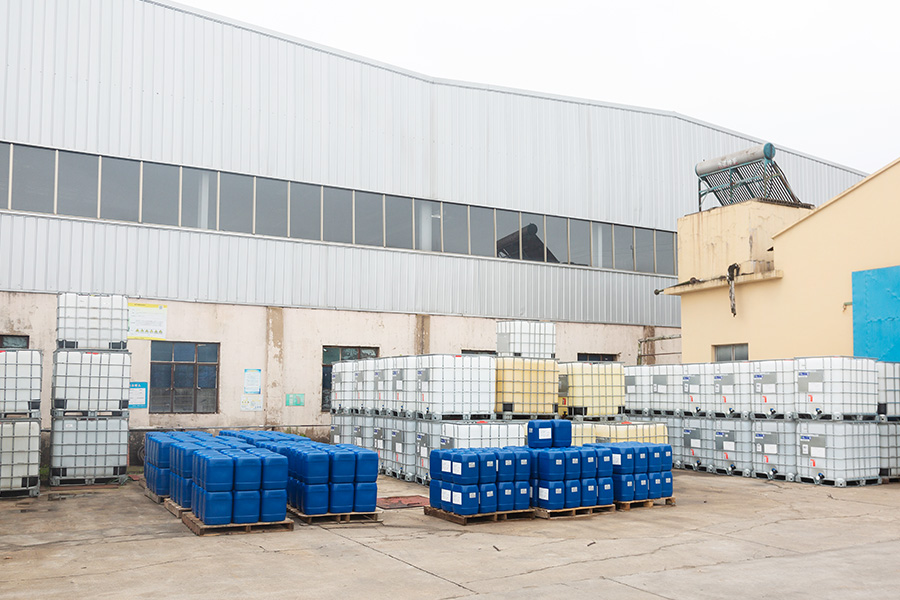To maintaining the efficiency and longevity of circulating cooling water systems, corrosion and scale buildup are among the most pressing concerns for industries worldwide. Cooling systems are essential in industries ranging from power generation and petrochemicals to steel production and pharmaceuticals. To tackle these challenges, a Circulating Water Low Phosphorus Corrosion and Scale Inhibitor has become a game-changer. The right inhibitor not only prevents corrosion and scale but also enhances system performance, ultimately improving energy efficiency and extending the life of costly equipment. However, understanding how key elements like chelation and dispersion contribute to the success of these inhibitors can make all the difference.
At the heart of a Circulating Water Low Phosphorus Corrosion and Scale Inhibitor is its ability to effectively prevent the buildup of minerals that can lead to corrosion and scale. These issues are more than just an inconvenience; they can significantly reduce the operational efficiency of heat exchangers and other vital system components. This is where the chemistry of chelation and dispersion steps in. By targeting scale-forming minerals such as calcium carbonate, calcium sulfate, and calcium phosphate, the inhibitor works to break them down and prevent their crystallization. In the absence of such treatments, these minerals would settle, form solid deposits, and increase the likelihood of damage to metal surfaces.
Chelation is the process by which metal ions, such as calcium, are bound and stabilized by chelating agents, which prevents these ions from forming solid, undesirable compounds. For circulating water systems with high hardness, this is especially important. When calcium ions are chelated, they are no longer available to combine with other substances and form hard deposits. This allows the water to remain free-flowing and ensures that the surfaces of equipment are protected from the damaging effects of scale. This is particularly vital in cooling systems where heat transfer is key, and scale buildup can dramatically reduce efficiency.
Meanwhile, dispersion plays an equally critical role. Dispersion is the process by which the inhibitor prevents the aggregation of fine particles, ensuring that any suspended minerals or dirt in the water remain evenly distributed and do not form harmful clumps. In simple terms, dispersion ensures that scale-forming particles are kept in suspension, preventing them from settling on surfaces and causing problems. This is essential for maintaining the smooth operation of industrial cooling systems. Without effective dispersion, even the smallest particles could settle, building up over time and causing significant issues that require costly maintenance or repairs.
These combined effects of chelation and dispersion make the Circulating Water Low Phosphorus Corrosion and Scale Inhibitor a highly effective solution for industrial cooling systems. What sets this product apart from traditional inhibitors is its ability to work at various temperatures and across a wide range of water chemistries. Whether the water is highly alkaline, contains high levels of hardness, or faces extreme temperatures, this inhibitor's chelation and dispersion properties ensure it performs consistently. For industries like power generation and petrochemicals, where cooling water quality is paramount, these characteristics are vital for maintaining the health of the equipment.
The active ingredients in these inhibitors form a thin but robust protective layer on the metal surfaces of heat exchangers and cooling towers, shielding them from corrosion. This protective layer works by isolating the metal from direct contact with the corrosive elements in the water, preventing rust and other forms of deterioration. By forming this protective barrier quickly and efficiently, the Circulating Water Low Phosphorus Corrosion and Scale Inhibitor helps to extend the service life of expensive industrial equipment.

Moreover, the product is designed to meet increasingly stringent environmental regulations, particularly with its low-phosphorus composition. This is an important factor, as phosphorus is a significant contributor to eutrophication in water bodies, leading to harmful algae blooms and other environmental problems. By using a low-phosphorus inhibitor, industries can not only improve their operational efficiency but also ensure that their water discharge meets the environmental standards set by regulatory bodies.
It is essential to emphasize that the use of the right dosage and continuous application of the inhibitor is key to achieving the desired results. The effectiveness of the Circulating Water Low Phosphorus Corrosion and Scale Inhibitor depends on maintaining the proper concentration of the product within the system. Typically, the recommended dosage falls between 8 and 20 ppm, depending on the specific conditions of the circulating water system. Ensuring the correct dosage helps to maintain optimal water quality and prevent scale formation and corrosion from reoccurring.
In conclusion, chelation and dispersion are the unsung heroes in the fight against scale and corrosion in circulating water systems. These processes help to maintain system performance by preventing the formation of damaging deposits and extending the life of crucial industrial equipment. With the introduction of the Circulating Water Low Phosphorus Corrosion and Scale Inhibitor, industries can enjoy significant cost savings in terms of maintenance, water consumption, and energy efficiency, all while meeting environmental discharge requirements. By integrating this advanced inhibitor into their water treatment programs, companies can ensure the smooth operation of their cooling systems and contribute to a more sustainable future.
 En
En
 عربى
عربى 中文简体
中文简体

